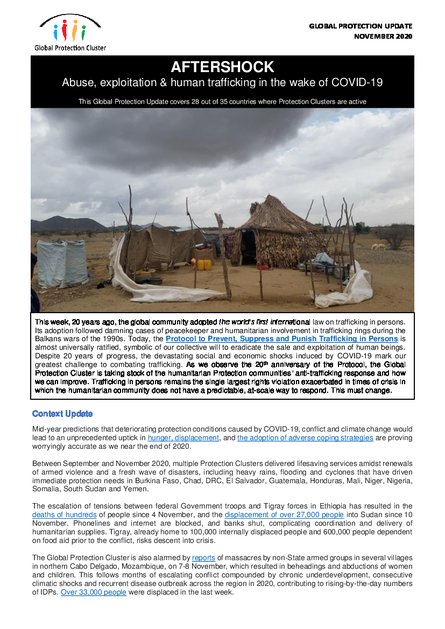
As the 20th Anniversary of the Protocol to Prevent, Suppress and Punish Trafficking in Persons was marked this week, this update takes a closer look into the issue which remains the single largest rights violation exacerbated in times of crisis in which the humanitarian community does not have a predictable, at-scale way to respond.
Mid-year predictions that deteriorating protection conditions caused by COVID-19, conflict and climate change would lead to an unprecedented uptick in hunger, displacement, and the adoption of adverse coping strategies are proving worryingly accurate as we near the end of 2020.
Key highlights from operations include:
- 66% of Protection Clusters are reporting trafficking in persons as a current risk, and associated phenomena are also increasing
- Active conflict or violence is occurring in 75% of operations. 20 operations report the situation as severe or extreme
- 25 operations report new forced movement and displacement, including forced returns. 16 operations classify the situation as severe or extreme.
- Explosive ordinance contamination is a risk across 16 operations. In Afghanistan, Libya & Yemen the risks for civilians are extreme.
- 100% of operations describe psychological distress and growing mental health needs of affected populations. 74% rate the risk of distress as severe; 15% as extreme
- 27 operations report an increase in Gender-Based Violence; 89% describe the GBV risk as severe or extreme.
- 25 out of 28 operations report an increase in violence against children
- 50% of operations report severe or extreme risks related to housing, evictions, land and property
- 75% of Protection Clusters report early marriage as a moderate to extreme risk. 16 operations rate the risk as significant or major.
Read more about the current state of protection in the Global Protection Update for November 2020.
